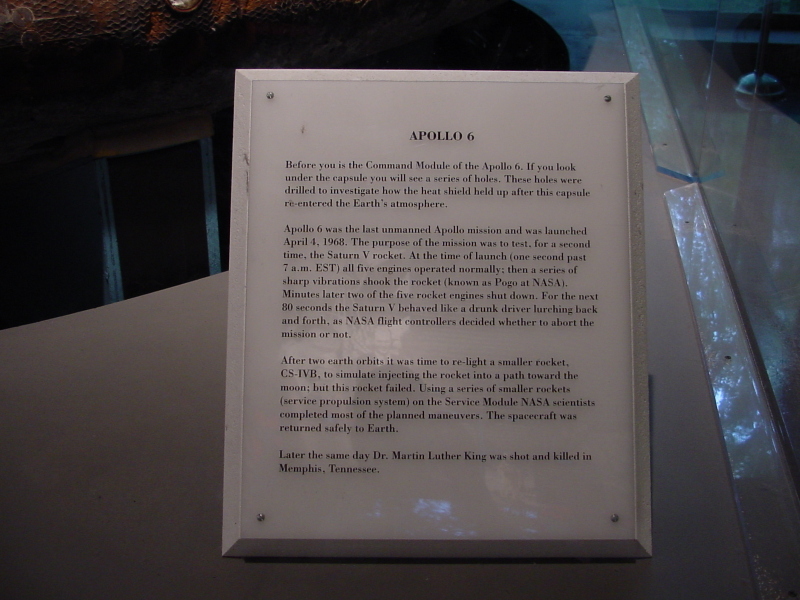| Prev |
heroicrelics.org Fernbank Science Center Site Index Apollo 6 Gallery |
Next |
dsc05164.jpg
Sign by the command module. It reads:
APOLLO 6
Before you is the Command Module of the Apollo 6. If you look under the capsule you will see a series of holes. These holes were drilled to investigate how the heat shield held up after this capsule re-entered the Earth's atmosphere.
Apollo 6 was the last unmanned Apollo mission and was launched April 4, 1968. The purpose of the mission was to test, for a second time, the Saturn V rocket. At the time of launch (one second past 7 a.m. EST) all five engines operated normally; then a series of sharp vibrations shook the rocket (known as Pogo at NASA). Minutes later two of the five rocket engines shut down. For the next 80 seconds the Saturn V behaved like a drunk driver lurching back and forth, as NASA flight controllers decided whether to abort the mission or not.
After two earth orbits it was time to relight a smaller rocket, CS-IVB, to simulate injecting the rocket into a path toward the moon; but this rocket failed. Using a series of smaller rockets (service propulsion system) on the Service Module NASA scientists completed most of the planned maneuvers. The spacecraft was returned safely to Earth.
Later the same day Dr. Martin Luther King was shot and killed in Memphis, Tennessee.
Well, kind of mixing up facts: All of the first stage's engines worked fine, although the vehicle experienced pogo. It was two of the second stage's engines which shut down. And the second burn of the engine on the "S-IVB" failed. Then they used the single service propulsion system (SPS) engine on the service module to try to achieve some of the speed which would have been provided by the second burn of the S-IVB.

| Time picture taken | Fri Jun 11 07:45:28 2004 |
| Location picture taken | Fernbank Science Center Atlanta, GA |
| Prev | Apollo 6 Gallery | Next |